Why Microsoft's Continuum may succeed in putting a PC in your pocket, while Motorola's Atrix failed
These are exciting times! We are at the verge of Windows 10 Mobile's debut. The unprecedented success of the desktop version of the OS, with 75 million installs in less than 30 days, provides great momentum for this unified platform.
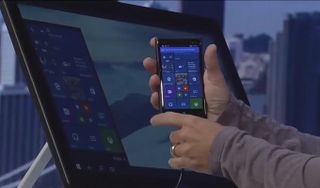

But before the new mobile OS arrives the question many have is:
"What will differentiate the platform from iOS and Android?"
One answer according Microsoft's Satya Nadella and Joe Belfiore is,
"Continuum" for phone.
Critics argue that projecting the small screen of a phone to a larger display to mimic a desktop environment has been tried and has failed before. They offer the Motorola Atrix as an example. They've concluded that the factors that contributed to the failure of the Atrix will also lead to the eventual failure of Continuum. If Motorola's Atrix represented the full scope of Microsoft's position with this similar technology, I'd be a critic too. However, that is not the case. Allow me to project a bigger picture.
We will look at:
- Technology
- Industry Position
- Timing
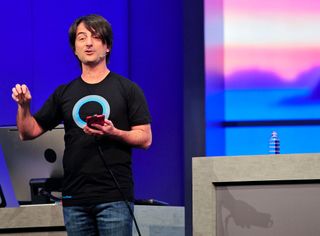
Technically Speaking
Let's first take a look at the technology. In a nutshell, both Microsoft and Motorola promised to combine the functionality of multiple devices within the context of one. With the added support of peripherals, both companies promised that their particular approaches could essentially turn your pocketable smartphone into a PC.
The Motorola Atrix was released four years ago in Q1 2011. The device ran Android 2.2 (Froyo) though the newer Android 2.3 (Gingerbread) had been available for approximately two months by the time the Atrix was released. We'll hit on that fragmentation bit in a bit.
Motorola's approach was simple. It was essentially a plug and play proposition. A user could plop his/her Atrix into a proprietary Motorola desktop ($129) or laptop ($499) dock and his/her phone screen and apps would display as larger versions of themselves on the new display. Unfortunately, there was no coding within the mobile apps to make them function more like desktop apps once on a larger screen.
Get the Windows Central Newsletter
All the latest news, reviews, and guides for Windows and Xbox diehards.
They remained just phone apps, behaving as phone apps on a "non-phone" display. This particular dilemma is at the core of similar attempts at this one-device-for-all-scenarios solutions. The Asus Padphone suffers from the same fate. Microsoft's Continuum has a remedy for this.

At its core
To understand the differences between Microsoft's approach and that of its competitors, we must understand a fundamental aspect of Continuum. Continuum is not simply a feature that Microsoft is implementing on a single hardware device. As I shared in "Highs and Lows Part V: Continuum", it is an ideology governing how Microsoft is approaching the transient nature of modern computing. By way of a synergistic OS and hardware combination that can conform to a user's needs, Continuum is an ecosystem-wide platform solution that currently supports hybrid Windows devices and Windows 10 Mobile phones. The new category of devices that Nadella alluded to in his "7/10/14" memo may also benefit from Continuum.
So what is the remedy for the app dilemma faced by Microsoft's competitors? Universal apps of course. Microsoft's pioneering efforts to create a single OS core for all Windows devices has established a bridge that successfully conveys apps across form factors.

Though there is some code tweaking required to tailor apps for each form factor, the dream of coding once for all devices has been realized. Windows 10 empowers developers to code a single app that is optimized to work as users would expect with a mouse and keyboard (shortcuts and all) for the desktop environment. Plus it maintains the small touch environment of a phone.
Additionally Continuum enabled Windows phones can connect wirelessly to a keyboard and mouse, and with a Miracast set-up, to a larger display. Microsoft will also provide a hub currently dubbed the 'Munchkin' (unconfirmed $99 price) that will have numerous ports to facilitate a wired connection.
Because Continuum is a platform capability of Windows 10 rather than simply a device feature, Microsoft's OEM partners will be capable of creating similar hubs to accompany their Windows 10 phones. Acer's recently announced Jade Primo and hub are an example. The open competition among OEMs will help keep Continuum accessory costs in check. Unlike Motorola's expensive sole proprietor solution.
Moreover, Microsoft's solution allows for a smartphone to power two screens simultaneously. That means a parent can wirelessly project a video to a larger screen for junior while dad triages emails on his Windows phone. The Atrix was incapable of this.
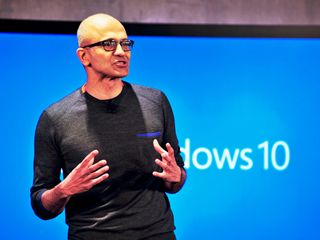
Power position
The technology is just the first piece of this puzzle. The unique industry position of each of these firms is the second profoundly critical component.
First, Motorola as a single OEM (among many), simply using and contractually constrained by Google's version of Android, had little power over the OS beyond skinning it. They weren't even using the most recent version of the OS at the time. Thus, though Motorola created hardware designed with the flexibility to conform to various scenarios, they couldn't modify the OS to do the same. Android at its core was not designed to reshape to fit diverse form factors. Additionally, in 2011 the fragmentation that still plagues the Android platform upon which the Atrix was built was even more profound.
By contrast, Microsoft controls the Windows 10 operating system. As such the company has deliberately designed Continuum as a fundamental component of the OS. Any Windows 10 device (phone/tablet) with the proper hardware will, therefore, have the ability to use Continuum. Microsoft will also manufacture Continuum enabled hardware and has many OEM partners (and is courting others) who will do the same.

The sheer scope of Microsoft's position in the industry to promote and support Continuum through partnerships, first party device production and full control of the OS dwarves the minuscule impact Motorola's Atrix had on the industry four years ago.
Many of Microsoft's 1.5 billion PC users are upgrading to Windows 10 which at its core erases the barriers between the PC and the mobile versions of the OS. This decision is a powerful power play. With the support of OEM partners, Microsoft has the resources to bring Continuum to the broad base of Windows users. If that fails or succeeds is yet to be seen. The point here is that since Motorola's efforts to "converge" devices was not something built into the core of Android (as it is with Windows) their impact on the industry and its chances for success were negligible.
Additionally, the Atrix, which was only sold through ATT in the US (though available in other regions), had limited distribution. Now Microsoft is no stranger to limited carrier support. However, the fact that Continuum is a platform-wide capability that will have the benefit of multiple OEM partners, and the additional distribution channels of Microsoft retail ensures that Continuum enabled phones will be more widely distributed than the Atrix ever was.
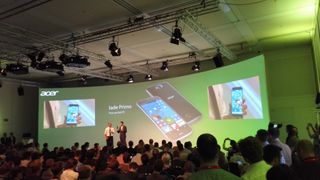
Timing is everything
The Atrix failed for many reasons. The main reason? The world wasn't ready. When the Atrix launched in Q1 2011, we were about four years into the iPhone initiated a new age of smartphones. At that time, the market was dominated by devices under 5 inches. In late 2011, however, hints of a new age began to emerge. The "huge" 4.7" display of the HTC Titan and the even more "titanic" dimensions of the 5.3" Samsung Galaxy Note dominated headlines. These phones that were pushing the size envelope were also pushing the industry into its next chapter.
In the years that followed, a Samsung led charge provoked OEMs to produce ever larger phones that teased at the dimensions of small tablets. We now exist in an industry where the new norm is 5" plus phablets. Phablet being the word created to describe the combination of a phone + tablet our smartphones have become.
Take note, these larger devices are not just bigger phones existing in the same type of consumer space that was the reality from 2007 - 2011. During that time frame, consumers saw their devices as "phones" with added capabilities.
Steve Jobs' (who is credited with heralding in the age of the smartphone), 2007 introduction of the first iPhone, corroborates this notion.
"...an iPod, a phone, and an internet communicator." - Jobs 2007
Devices under 5 inches, which were the norm for that period, fit well within a paradigm where users still saw greater use case scenarios for larger computing devices.
With the advent and widespread acceptance of powerful 5" – 6" phablets, computing activities previously reserved for PC's and tablets have now shifted comfortably to the smartphone. Phablet's are routinely used for web surfing, gaming, listening to music, watching videos, banking, emailing, chatting, video and picture editing and much more.
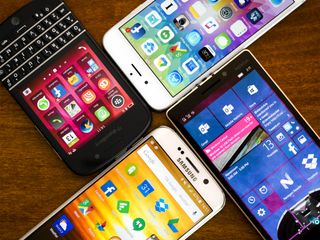
Take note that those computing activities were added to the things inherently baked into a mobile platform. Thus creating a merger of formally PC/tablet use case scenarios with the mobile environment of the phablets many of us now own. Computing is indeed increasingly mobile.
The industry has flowed organically into a place, a particular paradigm, where people are very comfortable using their smartphones/phablets as a composite device. It happened naturally. The pent up demand for the larger iPhones that saw record sales is additional evidence to this reality.
As smartphones continue to bear the load our tablets and PCs historically bore, they may continue this natural progression from our primary computing device toward our only computing device. Both the technological and human components of the industry are meeting at a crux where a convergence of computing modalities is becoming the accepted norm.
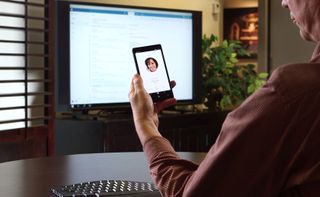
The time is right
The 4" Motorola Atrix did not exist in a consumer space that had evolved to the point of near single device dependency. A space where PC's and tablet sales are on the decline and smartphones are heavily relied upon for more advanced computing needs.
This is the space into which Microsoft has introduced Continuum, the Windows 10 OS, and the universal app platform. Microsoft is the only tech company to have designed an ecosystem platform that will support devices that are that all-in-one solution the industry seems to be headed. Consequently, Continuum achieves what Motorola's Atrix (and similar solutions) could not.
- It benefits from a universal app platform where apps are optimized for both a phone and desktop environment.
- It is a core component of the OS and ecosystem platform that OEM partners can take advantage of by building Windows 10 phones and peripherals.
- Industries, businesses, and municipalities can be key partners in supporting the third party support infrastructure for Windows 10 devices (hubs/docking stations).
By contrast, the Atrix suffered from the following.
- Phone apps that were not optimized for a larger display.
- Motorola did not control the software platform essential to support the hardware.
- Motorola was a single OEM offering a single device rather than a provider of a platform capable of supporting an industry.
- Accessories required for the Atrix were proprietary and expensive.
- The Atrix had limited distribution.

Wrap-up
Critics may be right. Continuum may fail. But if so it won't be for the same reasons the Atrix failed. Motorola's approach was that of a feature specific to a device that was part of a larger ecosystem.
Microsoft's approach is a platform play that will power a diversity of devices across an entire ecosystem.
As such, with OEM support, I see a possible future of airports, schools, offices, hotels, libraries, homes etc. equipped with hubs (and wireless accommodations) designed as Windows phone docking stations ready for Continuum. The world is ready.
What are your thoughts? Let us know in comments!
Jason L Ward is a columnist at Windows Central. He provides unique big picture analysis of the complex world of Microsoft. Jason takes the small clues and gives you an insightful big picture perspective through storytelling that you won't find *anywhere* else. Seriously, this dude thinks outside the box. Follow him on Twitter at @JLTechWord. He's doing the "write" thing!

